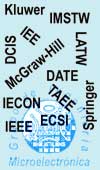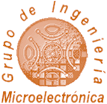
Web Map

Location

News

Santander Info

|
| GIM>Research>Publication |
| PUBLICATION |
| |
| Full record |
| Title: | Virtual Prototyping of Pressure Driven Microfluidic Systems with SystemC-AMS Extensions |
| Type: | International Paper |
| Where: | Microprocessors and Microsystems, Volume 39, Issue 8, Pages 854–865 |
| Date: | 2015-11 |
| Authors: |
Víctor Fernández
Andrés Mena
Cédric Ben Aoun
Francois Pêcheux
Luis J. Fernández
|
| R&D Lines: |
|
| Projects: |
CA701 H-INCEPTION
|
| ISBN: | 0141-9331 |
| PDF File: |
|
| Abstract: | The design of ‘‘Lab on a Chip’’ microfluidic devices is, typically, preceded by a long and costly period of
prototyping stages in which the system is gradually refined by an iterative process, involving the manu-
facturing of a physical prototype and the making of a lot of laboratory experiments. In this scenario, a
virtual prototyping framework which allows the emulation of the behavior of the complete system is
greatly welcome. This paper presents such a framework and details a virtual prototyping methodology
able to soundly handle microfluidic behavior based on SystemC-AMS extensions. The use of these exten-
sions will permit the communication of the developed microfluidic models with external digital or mixed
signal devices. This allows the emulation of the whole Lab on a Chip system as it usually includes a digital
control and a mixed-signal reading environment. Moreover, as SystemC-AMS is also being extended to
cover other physical domains within the CATRENE CA701 project, interactions with these domains will
be possible, for example, with electromechanical or optical parts, should they be part of the system.
The presented extensions that can manage the modeling of a micro-fluidic system are detailed. Two
approaches have been selected: to model the fluid analytically based on the Poiseuille flow theory and
to model the fluid numerically following the SPH (Smoothed Particle Hydrodynamics) approach. Both
modeling techniques are, by now, encapsulated under the TDF (Timed Data Flow) MoC (Model of
Computation) of SystemC-AMS. |
|
|








